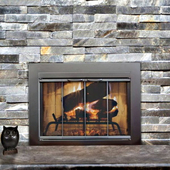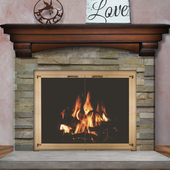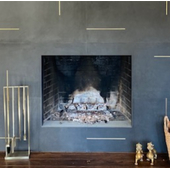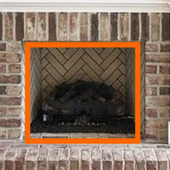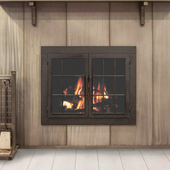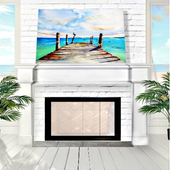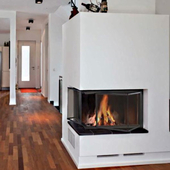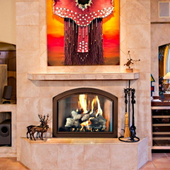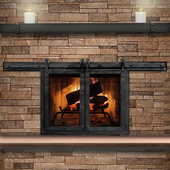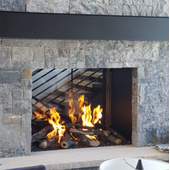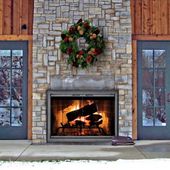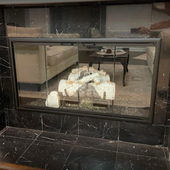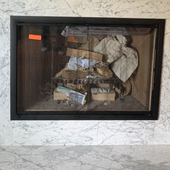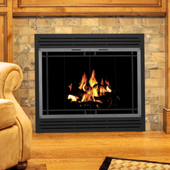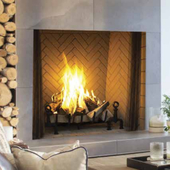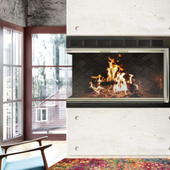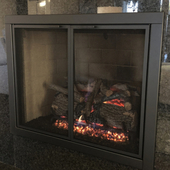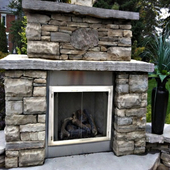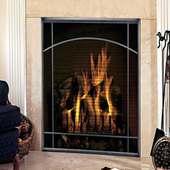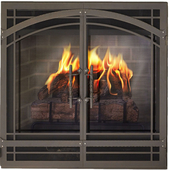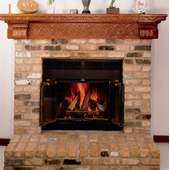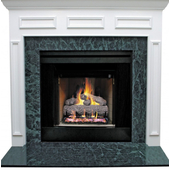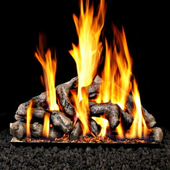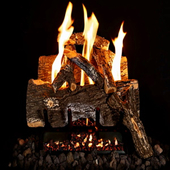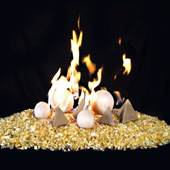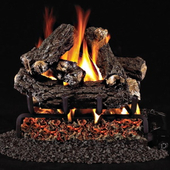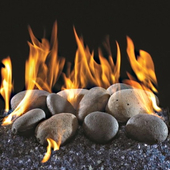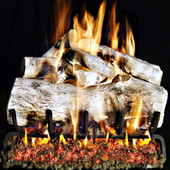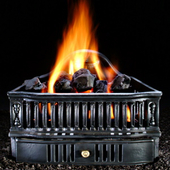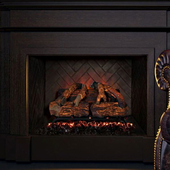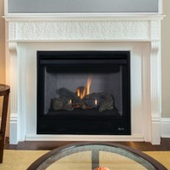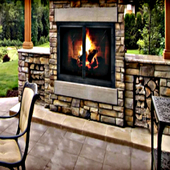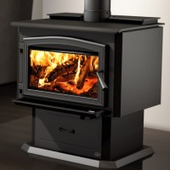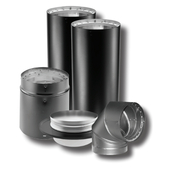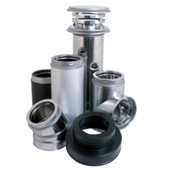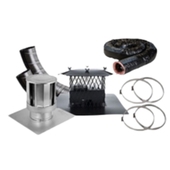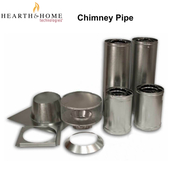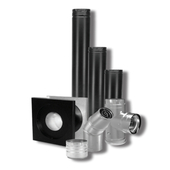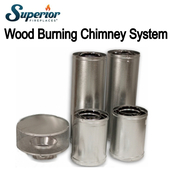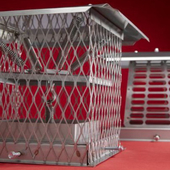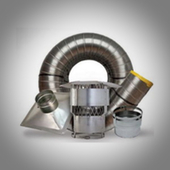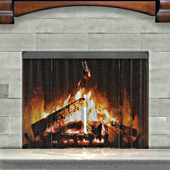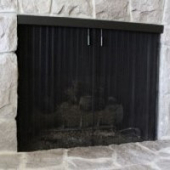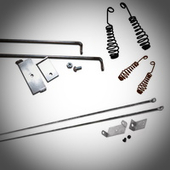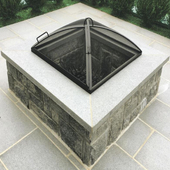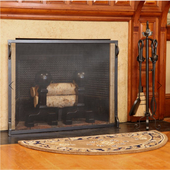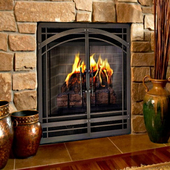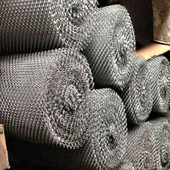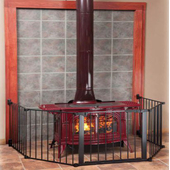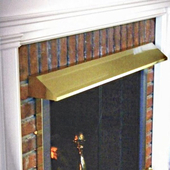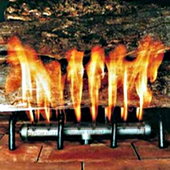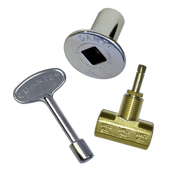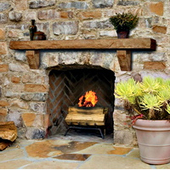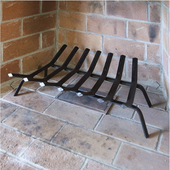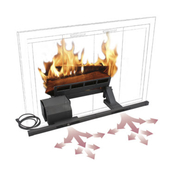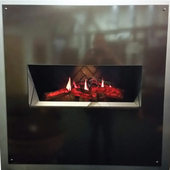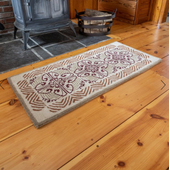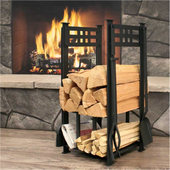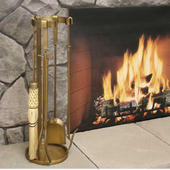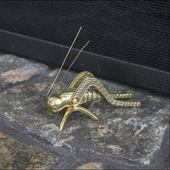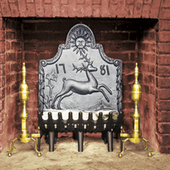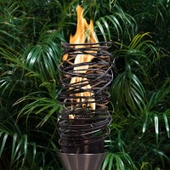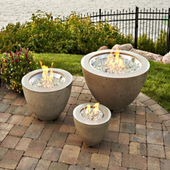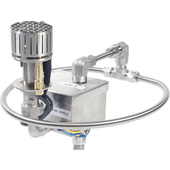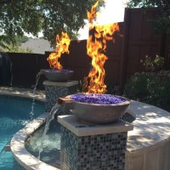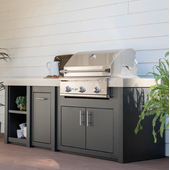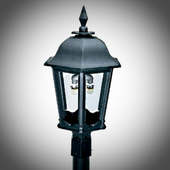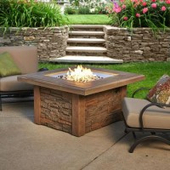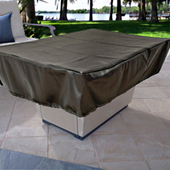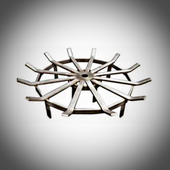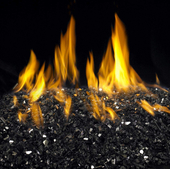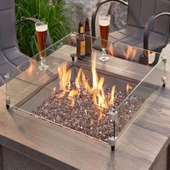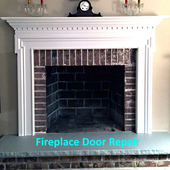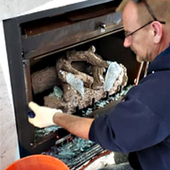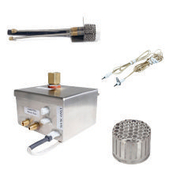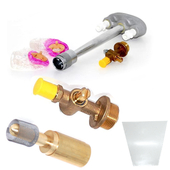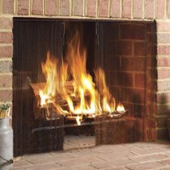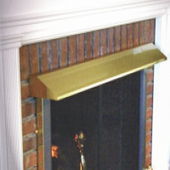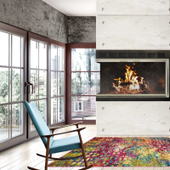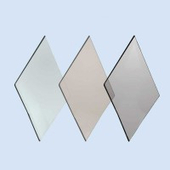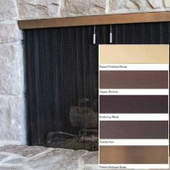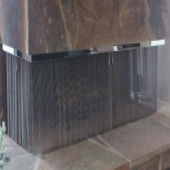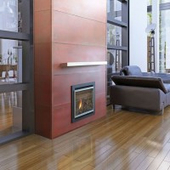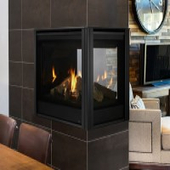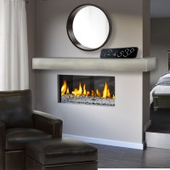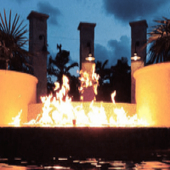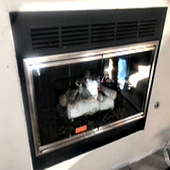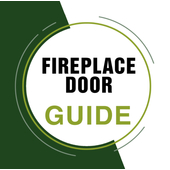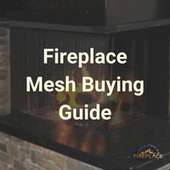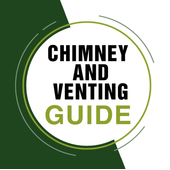The 8" Ventis Single-Wall Black Stove Pipe with Barometric Damper. A barometric damper is a device used in heating systems, particularly those that utilize gas or oil burners, to regulate and control the draft or airflow within the flue or chimney. It plays a crucial role in ensuring the efficient and safe operation of heating appliances by maintaining the proper draft conditions. Here's how it works and its components:
Automatic Operation: Barometric dampers are designed to work automatically based on the principles of airflow and pressure differentials. They consist of a hinged flapper or damper mechanism that responds to changes in air pressure within the flue or chimney.
Adjustable Flapper: The key component of a barometric damper is the adjustable flapper. This flapper is connected to a pivot point and can be set at different angles to control the amount of air entering the flue. By adjusting the flapper, you can fine-tune the draft to achieve the desired level for your heating appliance.
Perfect Draft: The primary goal of using a barometric damper is to achieve the perfect draft. The "perfect draft" refers to the optimal rate of air intake into the flue, which ensures efficient combustion and prevents the backflow of combustion byproducts into the living space. This is essential for the safe and efficient operation of gas or oil-fired heating appliances.
Diameter and Installation: Barometric dampers come in different diameters, typically ranging from 6 inches to 8 inches to match the size of the flue or chimney. They are often installed on a tee, which is a type of pipe fitting that connects the heating appliance to the chimney or flue. The damper is usually positioned within the tee assembly.
Stabilizing Draft: One of the main functions of a barometric damper is to stabilize the draft. Draft instability can result from various factors, including changes in temperature, wind conditions, or variations in the combustion process. The damper responds to these changes by automatically adjusting the flapper to maintain a consistent and appropriate draft.
Drawing Room Air: In addition to stabilizing the draft, a barometric damper can also serve to draw room air into the flue. This can help ensure that the heating appliance receives an adequate supply of combustion air, which is essential for efficient and safe operation. By controlling the amount of room air drawn in, the damper contributes to maintaining the right air-to-fuel ratio for combustion.
A barometric damper is a valuable component of heating systems, especially those using gas or oil burners, to regulate the draft and airflow in the flue. Its adjustable flapper allows for precise control, helping to achieve the perfect draft for optimal combustion while maintaining safety and efficiency. This device plays a crucial role in ensuring that heating appliances function as intended, even when external conditions and combustion variables change.
Features:
- Crafted from heavy-duty 22-gauge, cold-rolled steel, it ensures durability and long-lasting use.
- Maintains an 18" clearance to combustibles, ensuring safety.
- Features a scratch-resistant and rust-free finish, preserving its appearance over time.
- The fume-free finish ensures a clean and problem-free initial ignition.
- Achieves a perfectly round and precise pipe-to-pipe fit, thanks to Olympia's advanced butt-welding and precision end-forming technology.
Specifications:
- Material: Steel
- Diameter: 8-Inch
- Duct Shape: Round
- Product Type: Draft Control
- Weight: 10 lbs.
- Pipe Wall: Single
- Application: Oil, Residential, Wood
- Pipe Type: Barometric Damper
- Size: 8" Inner Diameter
Downloads:
- Ventis-Class-A Chimney Pipe Installation Manual
- Ventis-Class-A All-Fuel-Chimney-System-Brochure
- How To Install Ventis Pipe
Ventis Single Wall Black Stove Pipe: Safely Linking Class-A Chimney to Your Heating Appliance
Seamless Connection: Most heating appliances necessitate a connector pipe bridging the gap between the chimney and the appliance itself, be it a Class-A pipe or a masonry chimney. This black connector pipe plays a pivotal role in your venting system. It must fulfill multiple criteria. First and foremost, it must securely transport flue gases to the chimney without any risk of leakage into your home. Additionally, it needs to maintain the proper clearance from combustible materials. Lastly, it should possess an appealing aesthetic, as it's the visible face of your venting system. In this context, Ventis Black Stove Pipe, available in both single and double wall configurations, stands out as the clear choice.
The Distinct Advantage:
- Sturdy Construction: Crafted from heavy-duty 22-gauge cold-rolled steel, ensuring durability.
- Patent-Pending Fume-Free Finish: Eliminates the initial firing odors for a more pleasant environment.
- Precision Engineering: Achieves a flawless roundness and a perfect fit from pipe to pipe, thanks to smooth welding and end-forming technology.
- Five-Year Limited Warranty: Providing peace of mind and long-term reliability.
Wood Burning Stove Pipe Clearances:
To ensure safety and compliance, it's crucial to maintain proper clearances between stovepipes chimney connectors, and combustible surfaces. The National Fire Protection Association (NFPA) dictates that single wall stove pipe should maintain an 18" clearance from combustible walls. When such clearance isn't feasible, a double-wall stovepipe should be employed. Most double-wall stove pipes require an 8" clearance from ceiling combustibles and a 6" distance from wall combustibles. By utilizing a "Heat Shield" with a single wall stove pipe, you can reduce clearances from 18" to 6" for walls and 9" to the ceiling.
Proper Installation Guidelines:
Contrary to a common misconception, stovepipes cannot extend directly through the roof and ceiling of a wood stove. They must connect from the stove to a wall or ceiling. If the stovepipe is intended to pass through the ceiling, attic, or roof, it must be linked to a Class-A pipe, which is insulated and necessitates a 2-inch clearance from combustible materials. Additionally, when entering a flammable wall, an insulated thimble is mandatory.
Ventis Single Wall Black Stove Pipe ensures both safety and aesthetic appeal, providing you with the peace of mind and functionality required for a successful heating appliance installation.
No posts found


